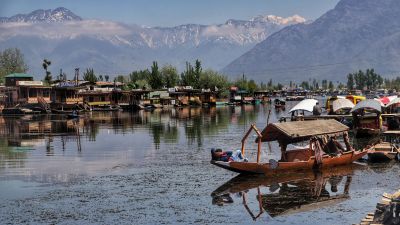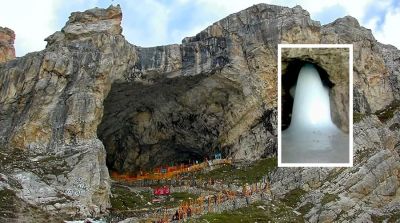The Impact of Tourism in Gulmarg: Economy and Environment
The Impact of Tourism in Gulmarg: Economy and Environment
Gulmarg, located in the picturesque Kashmir Valley, is renowned for its stunning landscapes, snow-capped mountains, and lush meadows. Over the years, Gulmarg has emerged as a popular tourist destination, attracting visitors from all over the world. While tourism has brought economic prosperity to the region, it has also raised concerns about its impact on the environment. In this blog post, we will explore the dual impact of tourism in Gulmarg on the local economy and the environment.
Impact on the Local Economy
Tourism has been a major driver of economic growth in Gulmarg. The influx of tourists has created numerous job opportunities for the local population, ranging from hotel staff and tour guides to artisans and shopkeepers. Additionally, the demand for goods and services by tourists has led to the growth of small businesses in the area, further boosting the local economy.
Hotels, guesthouses, and restaurants in Gulmarg witness high occupancy rates during the peak tourist season, generating significant revenue for the hospitality sector. Furthermore, the popularity of adventure sports such as skiing and trekking has led to the development of related infrastructure, providing employment opportunities for adventure sports instructors and equipment rental services.
The tourism industry in Gulmarg has also stimulated the growth of ancillary industries such as handicrafts, textiles, and agriculture. Local artisans and craftsmen benefit from selling their products to tourists, while farmers supply fresh produce to restaurants and markets catering to visitors.
In addition to creating direct employment opportunities, tourism has spurred investments in infrastructure development, including roads, transportation, and healthcare facilities. The revenue generated from tourism-related activities has enabled the local government to improve public services and upgrade amenities for residents and visitors alike.
Impact on the Environment
While tourism has brought economic prosperity to Gulmarg, it has also taken a toll on the fragile ecosystem of the region. The increasing number of tourists has led to environmental degradation, including deforestation, pollution, and habitat destruction. The construction of hotels, resorts, and tourist facilities has encroached upon natural habitats and disrupted the local flora and fauna.
The influx of visitors has resulted in littering, waste mismanagement, and water pollution in Gulmarg. The scenic beauty of the landscape is marred by garbage and plastic waste left behind by tourists, posing a threat to the local ecosystem and wildlife. The pollution generated by vehicles and tourist activities has also contributed to air and noise pollution in the area, affecting the overall environmental quality.
Climate change is another significant concern associated with tourism in Gulmarg. The retreat of glaciers, erratic weather patterns, and natural disasters pose a threat to the sustainability of the tourism industry in the region. As the environment continues to face challenges from human activities, it is imperative to adopt sustainable tourism practices and conservation efforts to protect Gulmarg's natural heritage for future generations.
Conclusion
In conclusion, tourism has had a profound impact on the economy and environment of Gulmarg. While it has brought economic opportunities and growth to the region, it has also raised environmental concerns that need to be addressed. Sustainable tourism practices, responsible development, and community engagement are essential for preserving the natural beauty and ecological balance of Gulmarg. By striking a balance between tourism development and environmental conservation, Gulmarg can continue to thrive as a sustainable and attractive destination for travelers around the world.
Share this blog post to spread awareness about the impact of tourism in Gulmarg on the economy and environment!
Disclaimer : The information provided in this blog is for general informational purposes only. While we strive to keep the content accurate and updated, TravelSetu assumes no liability for errors or omissions. If you believe any part of this blog infringes your rights or causes concern, please notify us immediately at info[at]travelsetu[dot]com so that appropriate action can be taken.

















